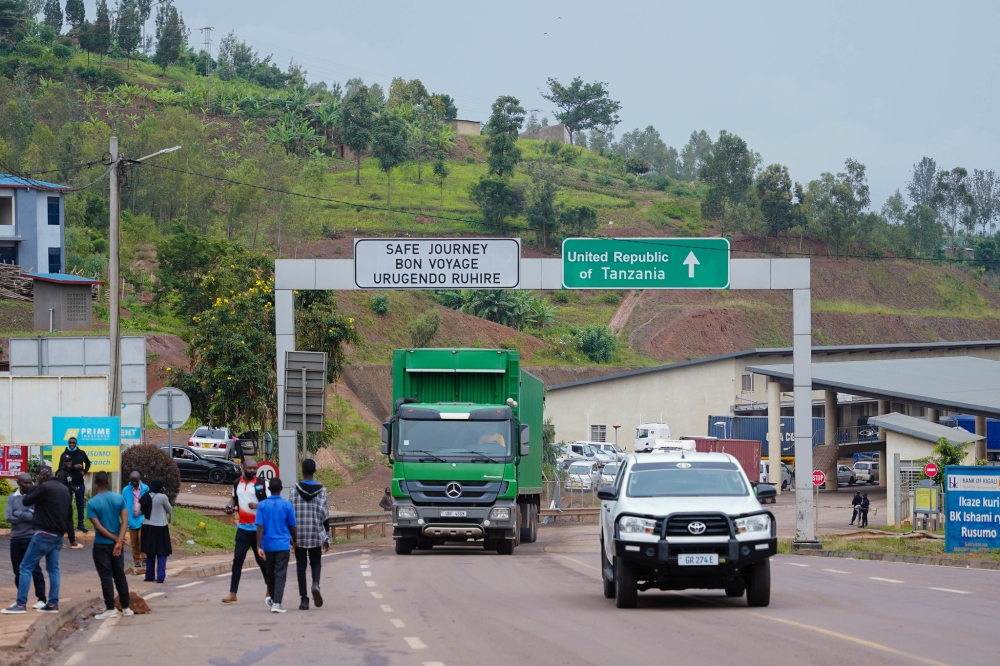

Kirehe District authorities are collaborating with Rwanda Biomedical Center (RBC) to ensure necessary preventive protocols are in place, especially at border points of entry, after the World Health Organisation (WHO) on January 13 reported about an outbreak of suspected Marburg Virus Disease (MVD) in the Kagera region of Tanzania.
The UN health agency’s announcement came about three weeks after Rwanda declared the Marburg Virus Disease outbreak over.
ALSO READ: Rwanda declares Marburg virus outbreak over
Bruno Rangira, the Mayor of Kirehe District, on Wednesday, January 15, told The New Times that: "We are working with RBC to ensure all preventive protocols are in place, especially at the border points of entry where screening and follow-up measures are being implemented for people coming from affected areas.
"We are mobilizing health workers in the border area to remind them of the necessary steps to take when handling suspected cases at health centers and within communities. Our efforts also include raising awareness among the population near the border about the symptoms of Marburg and guiding them on what actions to take if a community member shows these symptoms or if individuals have travelled to affected areas."
Bruno stressed that if someone exhibits signs of Marburg, they must immediately inform community health workers, who will assist in transferring the person to a health center for testing and care. As noted, in such situations, an alert is triggered throughout the health sector to ensure coordinated response.
"So far, we haven't had any cases, but we are proactively mobilizing resources and reminding communities about preventive measures such as handwashing, which proved effective during previous outbreaks in Rwanda."
"Given that the affected areas are approximately 150 kilometres from the [Rwanda] border, we are engaging local leaders to keep residents informed and vigilant about the situation."
Dr. Edson Rwagasore, the RBC Division Manager for Public Health Surveillance and Emergency Preparedness and Response, acknowledged they received WHO's International Health Regulations (IHR) alert regarding the suspected outbreak of Marburg Virus Disease in Tanzania, "with reported cases in Biharamulo and Muleba districts near the Rwanda-Tanzania border."
He added that: "While we await confirmation and further updates from the Government of Tanzania, Rwanda's surveillance efforts remain active at Points of Entry (POE) and within surrounding communities. We are also monitoring and conducting follow-up for individuals who recently traveled from these areas as a precautionary measure.
"We will continue to monitor the situation closely and collaboratively with WHO and neighboring countries."
On January 10, WHO received reliable reports from in-country sources regarding suspected cases of MVD in Tanzania’s Kagera region.
"Six people were reported to have been affected, five of whom had died. The cases presented with similar symptoms of headache, high fever, back pain, diarrhoea, haematemesis (vomiting with blood), malaise (body weakness) and, at a later stage of disease, external haemorrhage (bleeding from orifices),” reads the WHO statement.
Biharamulo and Muleba districts
As of January 11, the statement says, nine suspected cases were reported including eight deaths (case fatality ratio (CFR) of 89%) across two districts – Biharamulo and Muleba.
Bukoba district in Kagera region experienced its first MVD outbreak in March 2023, and zoonotic reservoirs, such as fruit bats, remain endemic to the area. The outbreak in March 2023 lasted for nearly two months with nine cases including six deaths.
National rapid response teams were deployed to support outbreak investigation and response; surveillance activities were intensified with contact tracing ongoing; laboratory samples from recent cases have been sent for confirmation at the National Public Health Laboratory.
According to WHO, the risk of this suspected MVD outbreak is "assessed as high at the national level” due to several concerning factors.
As noted, the suspected outbreak thus far involves at least nine suspected cases, including eight deaths, resulting in a high case fatality ratio of 89%. Healthcare workers are included among the suspected cases affected, highlighting the risk of nosocomial transmission. The source of the outbreak is currently unknown.
"The reporting of suspected MVD cases from two districts suggests geographic spread. The delayed detection and isolation of cases, coupled with ongoing contact tracing, indicates lack of a full information of the current outbreak. More cases are expected to be identified.”
According to the UN health agency, the regional risk is considered high due to Kagera region's strategic location as a transit hub, with significant cross-border movement of the population to Rwanda, Uganda, Burundi and DR Congo.
Reportedly, WHO says, some of the suspected cases are in districts near international borders, highlighting the potential for spread into neighbouring countries. MVD is not easily transmissible. In most instances, it requires contact with the body fluids of a sick patient presenting with symptoms or with surfaces contaminated with these fluids. However, it cannot be excluded that a person exposed to the virus may be travelling.
Global risk assessed as low
The WHO statement said the global risk is currently assessed as low.
The statement adds: "There is no confirmed international spread at this stage, although there are concerns about potential risks. Kagera region, while not close to Tanzania's capital or major international airports, is well-connected through transportation networks, and has an airport that connects to Dar es Salaam for onward travel outside Tanzania by air.
"This highlights the need for enhanced surveillance and case management capacities at relevant points of entry and borders, and close coordination with neighbouring countries to strengthen readiness capacities.”


